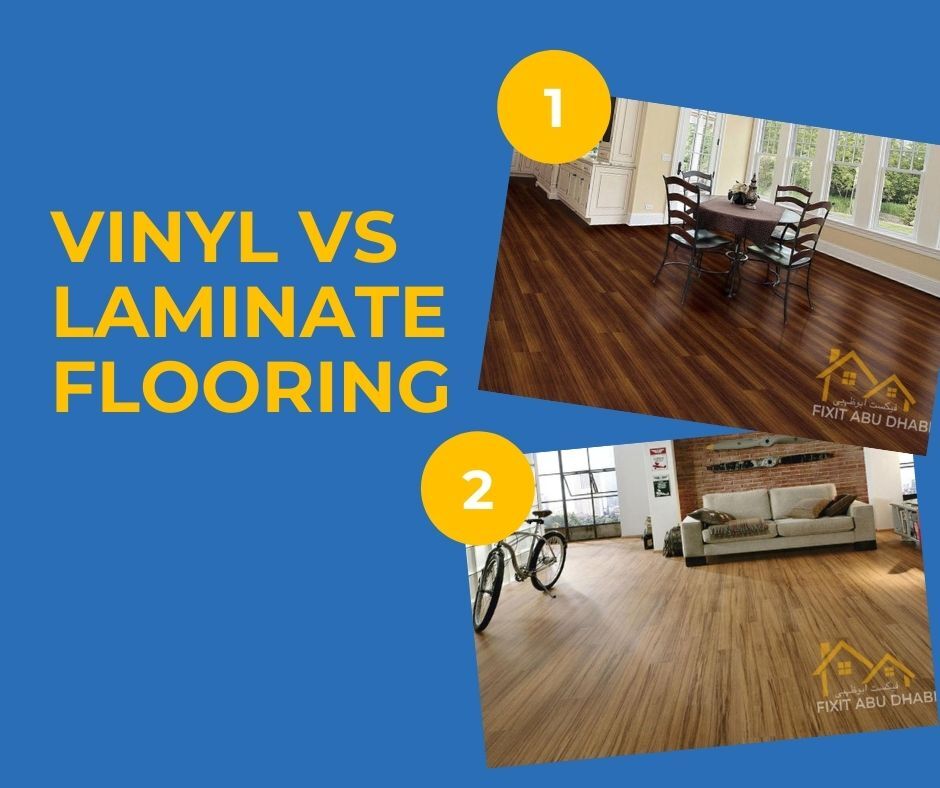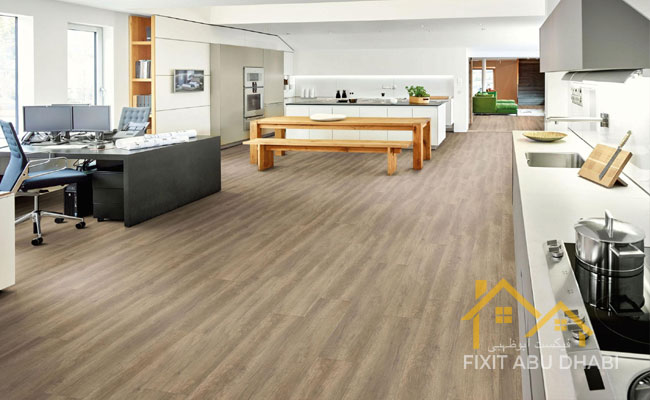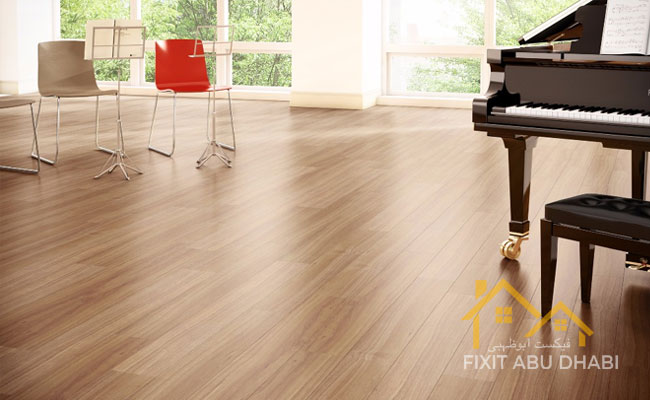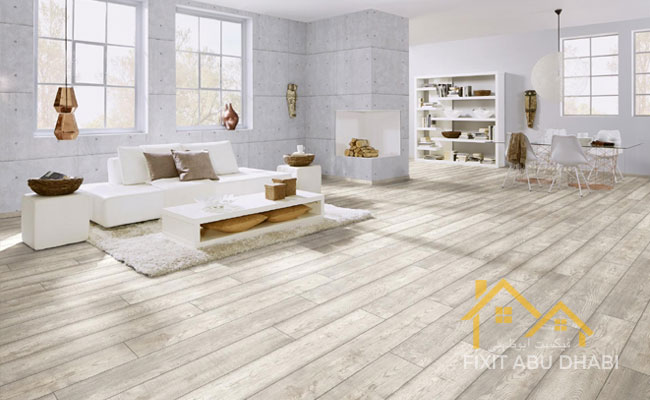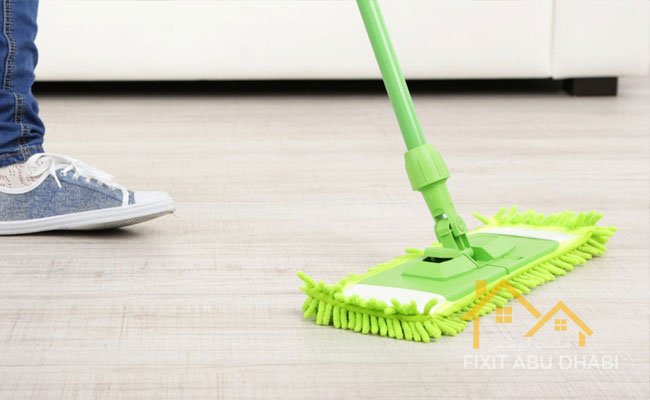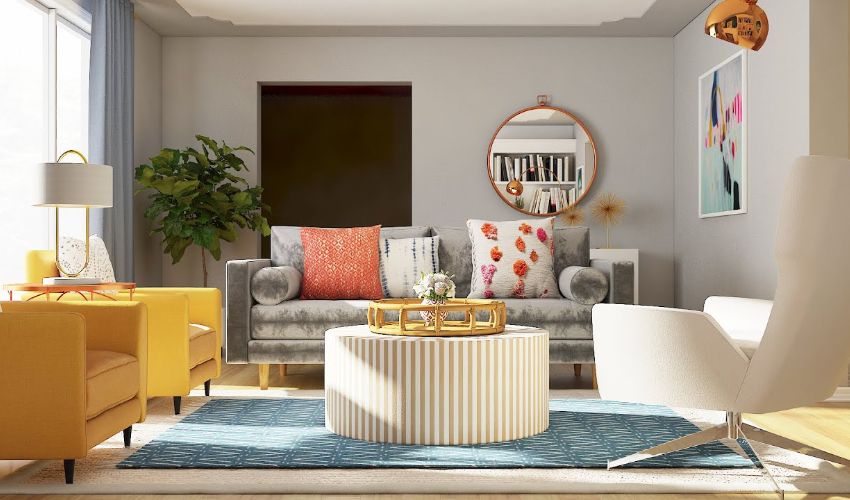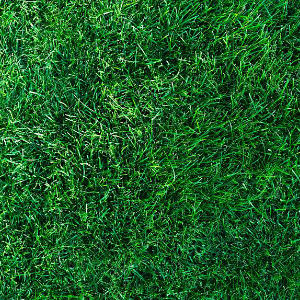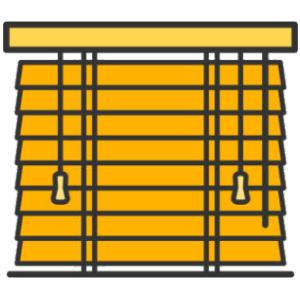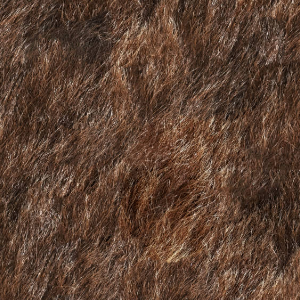Flooring manufacturers have continued to innovate and update the materials they utilize over time, resulting in fantastic options for homeowners. Laminate and vinyl flooring are excellent choices for long-lasting and low-cost flooring. Both offer a wide range of styles that mimic genuine wood, tiles, and stone. So, how can you decide which flooring is better for you?
You’ve come to the correct spot if you’re interested in learning more about the Vinyl vs. laminate Flooring Comparison guide. They all claim to be more durable, less expensive, and less difficult to maintain than hardwood, but how do they stack up?
When compared to more costly flooring, do any of these varieties keep flat? To assist you in making the right selection, we’ve extensively examined more than ten major purchasing considerations. Customers may find the process of purchasing an apartment to be stressful and complicated.
At Fixitabudhabi.ae our major objective is to assist you to overcome these challenges by giving you informative knowledge and access to our professional team of floor specialists who can assist you in finding out the best flooring option for your home.
Comparing Vinyl vs. laminate Flooring
Vinyl and laminate flooring have a lot in common, such as being inexpensive and very simple to install. Both of these synthetic flooring materials are available in a wide range of colors, patterns, and designs to complement your home’s current decor. Although the two types of flooring are fairly similar, there are a few key distinctions between Vinyl and laminate Flooring. Take a look at them:
Appearance and Design
Laminate flooring is often of superior quality in terms of look and style. It features more realistic embossing that mimics the look of hand-scraped hardwood. Vinyl’s embossing processes may make it appear like wood, but thicker core vinyl flooring looks the nicest and most authentic.
Different materials are used to make vinyl and laminate flooring. Vinyl is a synthetic substance. In most situations, the vinyl board’s base layer is constructed of glass fiber, which is then covered with PVC vinyl and plasticizer. The design is then embossed, and a wear-resistant protective coating, such as wax-free polyurethane, is applied. The core of laminate, on the other hand, is manufactured from wood by-products. Then use resin to seal it.
A translucent plastic layer reduces wear on the upper layer, which is the surface on which you are walking. It’s layered on top of the design layer in your preferred color and pattern. When compared to vinyl flooring, laminates are somewhat thicker, providing greater warmth and comfort when standing or walking.
Water Resistance
Water resistance is the major difference between Vinyl vs. laminate Flooring, and vinyl comes out on top. Most current vinyl floorings are composed entirely of polymer, which means they can resist a lot of moisture. It may be soaked in water and then dried and used regularly. Furthermore, vinyl panels allow you to install single panels across the room, preventing water seepage at the seams.
Moisture resistance is restricted in laminates. The fiberboard core of most goods may swell or soften if exposed to moisture over an extended period of time. The top layer will ultimately peel away due to the wet core. As a result, laminate may not be the best choice for areas with a lot of humidity, such as a family bathroom or a laundry room.
Installation
Depending on the type of flooring you pick, laminate and vinyl flooring are very simple to install. Each of them is a wonderful choice for individuals who enjoy DIY projects. Snap-on installation is used for laminate flooring. The plank snaps into the groove of the neighboring plank, and the seam is sealed when the planks are secured together.
The majority of laminate flooring projects are built as “floating” floors, which means they may be laid over existing flooring. To cut the pieces that fit your floor, you may use a regular table saw.
Vinyl allows you a wider range of installation options. You may also lock the table with a click, as well as peel and paste, paste, and so on. Because vinyl boards are heavy and must be cut exactly to fit the form and angle of the space, they are a little tough to work with. As a result, expert installation may be required.
Cleaning and Maintenance
Vinyl flooring is simple to clean and keep in good condition. It’s fine to mop these floors with moist mops; for more difficult issues, scrub them with approved cleansers. Vinyl can be cleaned in a variety of ways and doesn’t require much maintenance other than cleaning.
Laminate flooring care and cleaning can be a difficult procedure due to its poor moisture resistance. A dry technique, such as a broom or dry mop, is preferred. Use a damp mop that is almost dry to the touch if you need to mop the floor. Laminates may also require little upkeep.
Cost
Vinyl VS Laminate Flooring is very reasonably priced. Both are less expensive than other types of flooring, such as hardwood and ceramic tiles. Vinyl, on the other hand, will get more expensive as you look at luxury flooring options.
The cost will be determined by the thickness of your flooring and the design style you select. The cost of vinyl flooring starts at around $1 per square foot for simple adhesive vinyl boards. Luxury vinyl planks are expensive, costing up to $5 per square foot. However, because high-end luxury vinyl contains characteristics like a unique waterproof core and a stronger wear layer, you can get more bang for your buck.
Durability and Longevity
Although laminate flooring is robust and long-lasting, it is susceptible to water damage. Furthermore, if the top layer is damaged, it is typically not repairable. Most laminate flooring may last anywhere from 10 to 25 years, depending on how well it is cared for and maintained.
Vinyl flooring is also robust and long-lasting, as we all know. Vinyl may be seen as a lower-quality floor due to its cost, yet it may last up to 20 years in high-traffic areas of your house. Some vinyl flooring will layer over time, depending on how well they are cared for and maintained.
Conclusion: Make the Best Decision
After the complete comparison guide of Vinyl vs. laminate Flooring, we analyze that both laminate and vinyl flooring are excellent choices for individuals looking for a DIY project with inexpensive, long-lasting flooring. Consider your budget, practicality, and design choices while looking for new flooring.
Vinyl is the most resistant to moisture and spills, and it is often less costly than laminate. Laminate, on the other hand, provides a more authentic wood look to complement your home’s design sense.

